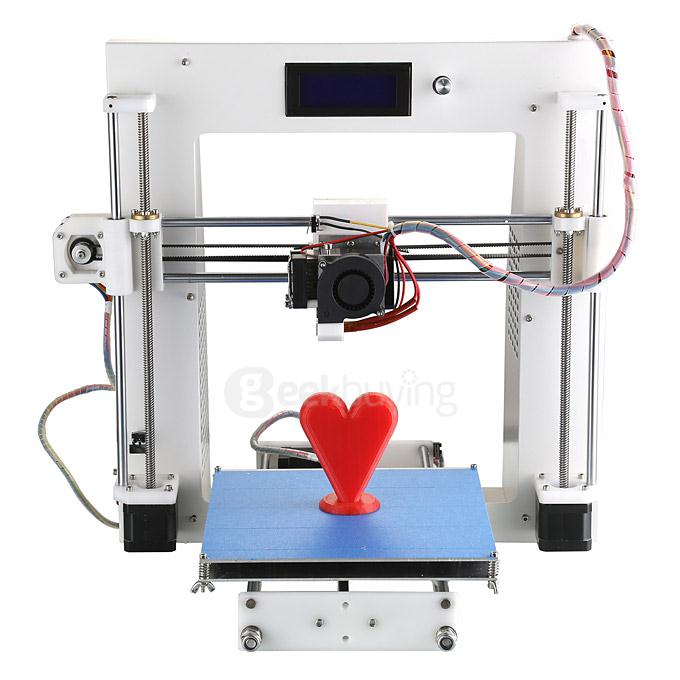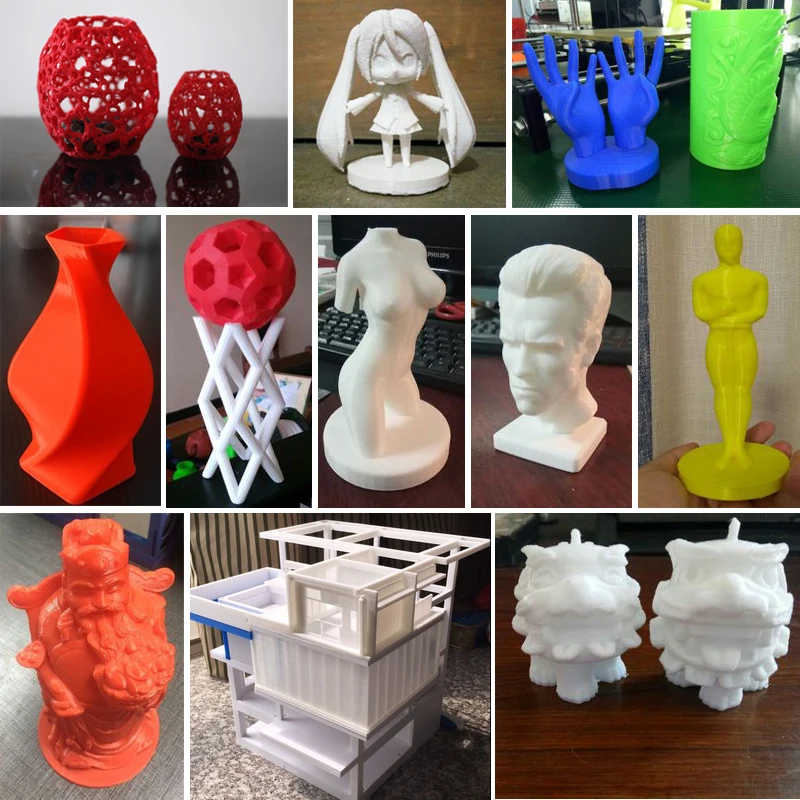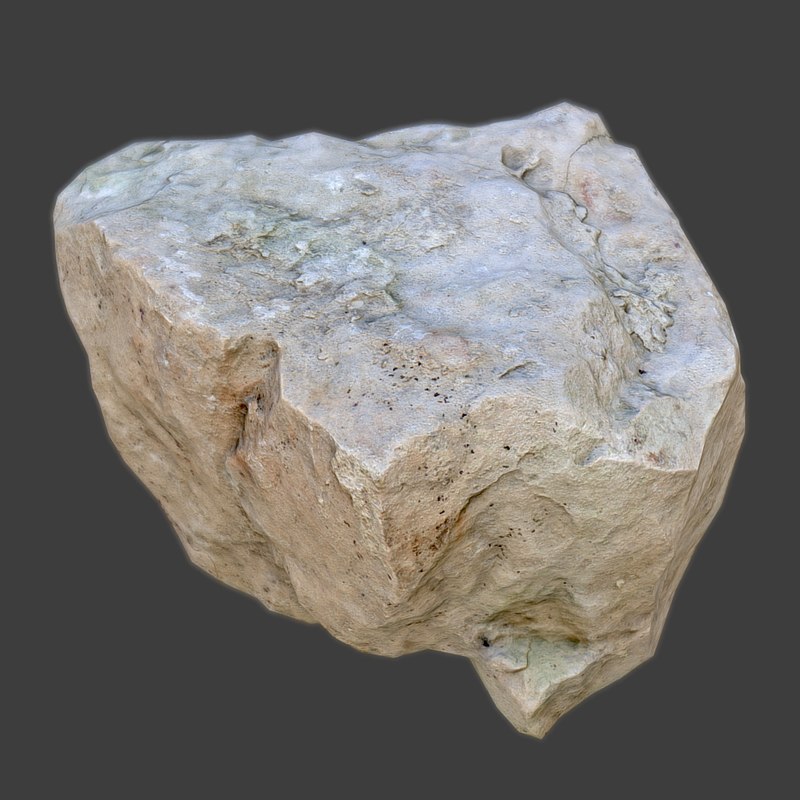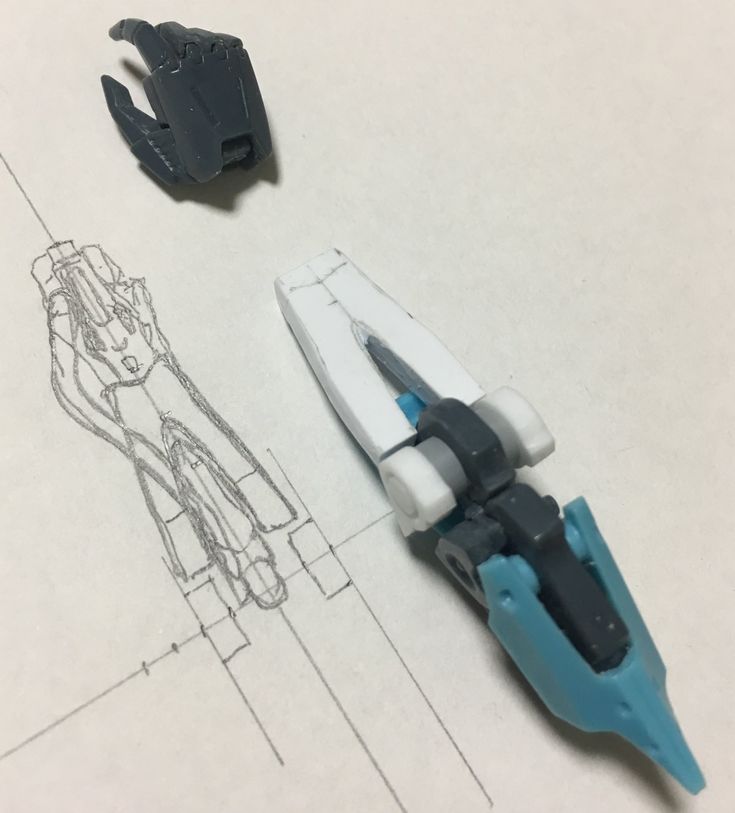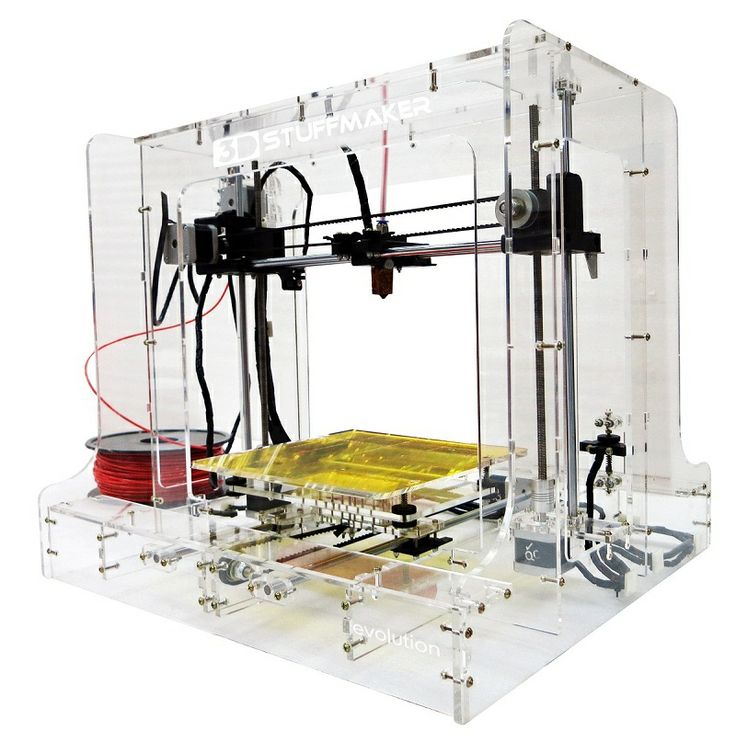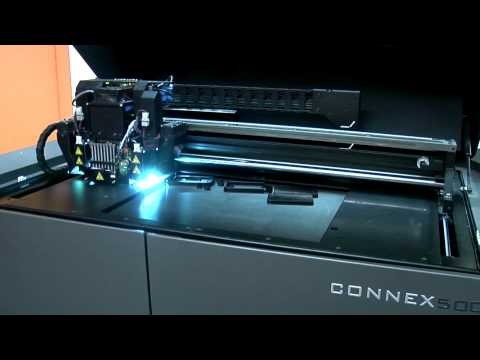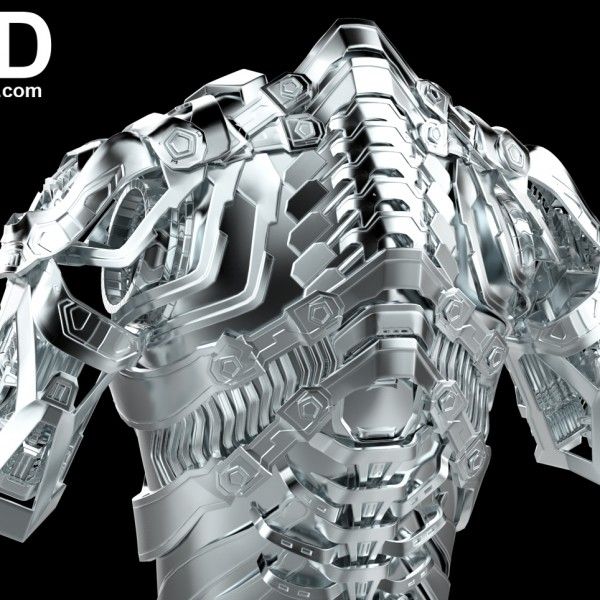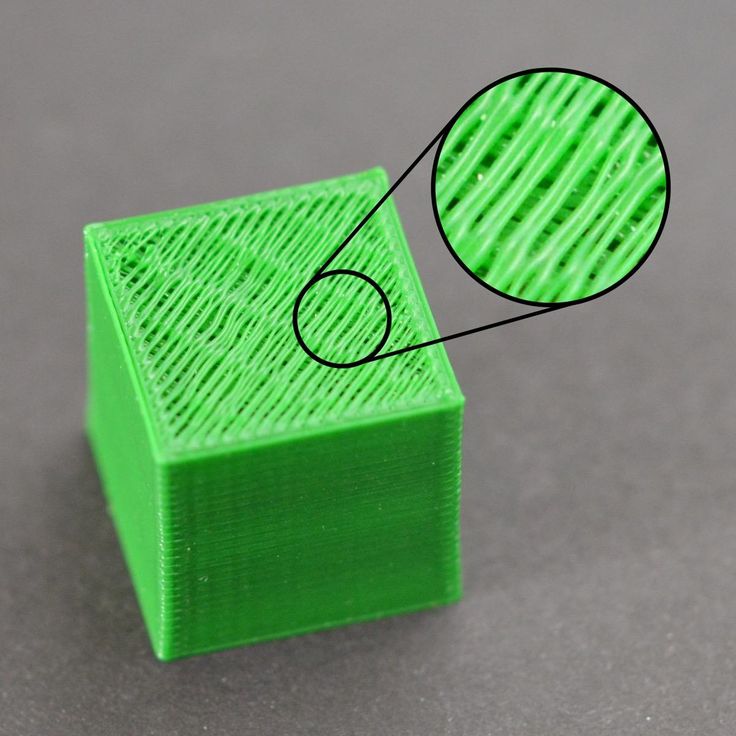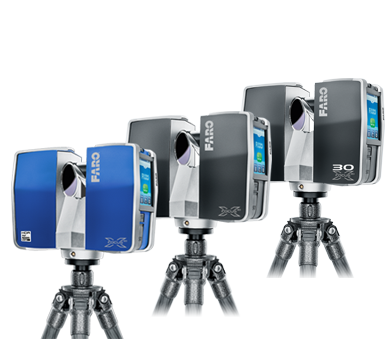Carbon fiber composite 3d printing
3D Printing Carbon Fiber and Other Composites
Composite materials, on the other hand, are parts made up of more than one material that, when combined, have properties different from their original materials. Materials like concrete and particleboard can be considered composites, because they are mixtures of a variety of materials. However, when we talk about composites from an engineering standpoint, we usually refer to composites with reinforcing fibers. Carbon fiber, fiberglass, and Kevlar are three of the most common fiber materials used for composites in industry. As we covered in the Physics of 3D Printing, the fibers are like spaghetti - thin, brittle, and easy to snap if bent. These fibers are almost never used by themselves - they are woven into sheets, wrapped into rods, or formed into custom molded shapes with the help of a matrix material to harden the fibers into an optimized shape. When many fibers are bound together to create larger structural elements, forces can distribute and disperse loads along the lengths of all of the fibers.
Fiberglass strands being laid down in a mold and cured with a thermoset resin.
Carbon fiber has one of the highest strength-to-weight ratios out there, making it very valuable for creating lightweight, strong parts. The fibers themselves are made up of carbon atoms whose crystal structure is aligned into strands, making the strands incredibly strong in tension. Traditionally, thermoset resins are used as the bonding agent to set these fibers into a designated shape, cured around a matrix material like foam. So you can create a sandwich panel by “sandwiching” the foam between to sheets of fiber weave, and curing it all with resin. In the context of 3D printing, the fiber can take two different forms:
Chopped Fibers are short-length fibers chopped into segments less than a millimeter in length and mixed into traditional thermoplastics to form what is called a filled plastic. These can be printed with an FDM printing process.
Continuous Fibers require a slightly different 3D printing method, in which continuous fiber strands are coated in a curing agent and laid down into a thermoplastic matrix extruded via a secondary print nozzle.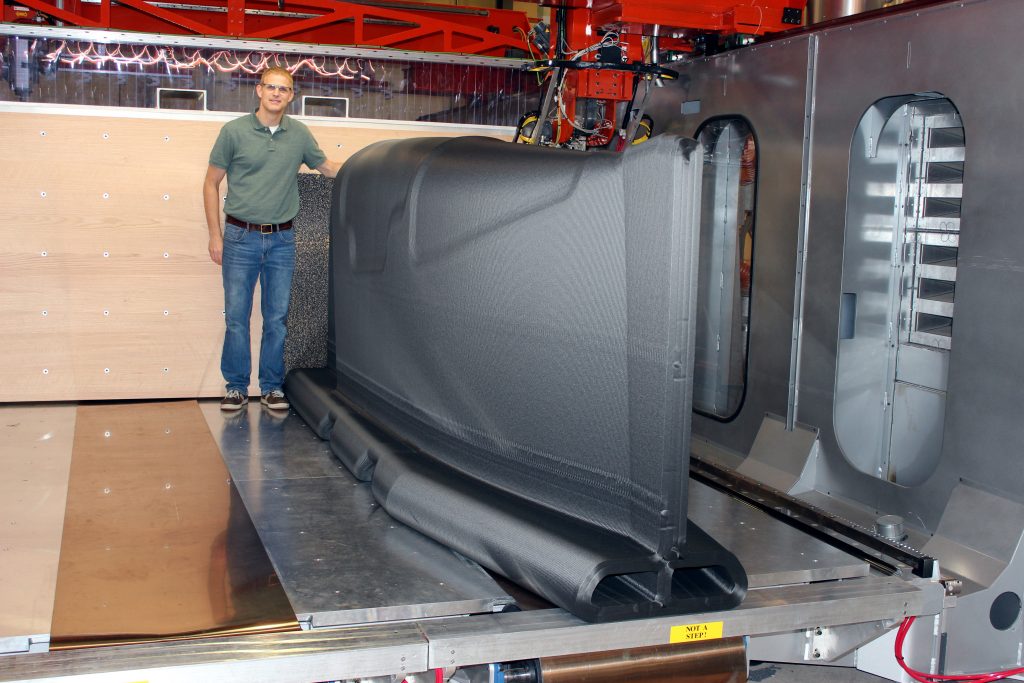 This process is called Continuous Fiber Fabrication (CFF).
This process is called Continuous Fiber Fabrication (CFF).
Two forms of 3D printed carbon fiber: on the top is a chopped fiber 3D printing filament, and below is a continuous strand of carbon fiber.
Either way you add fiber, the addition of the fibers boosts part strength and other material properties, but the amount it helps differs depending on the way that fiber is used, and what fiber it is. Generally speaking, a continuous carbon fiber 3D print is stronger than chopped carbon fiber 3D because the continuity distributes any applied loads.
Chopped Fiber 3D Printing Materials
Chopped fiber filled plastics are the most common type of composite 3D printed plastics. The most widely used chopped composite 3D printing material is chopped carbon fiber - where carbon fiber pieces are mixed with traditional 3D printing plastics like nylon, ABS, or PLA. Adding this “filling” to thermoplastics is a material booster pack. The fibers take on some of the stresses of the part, like how concrete is added to cement to boost its strength.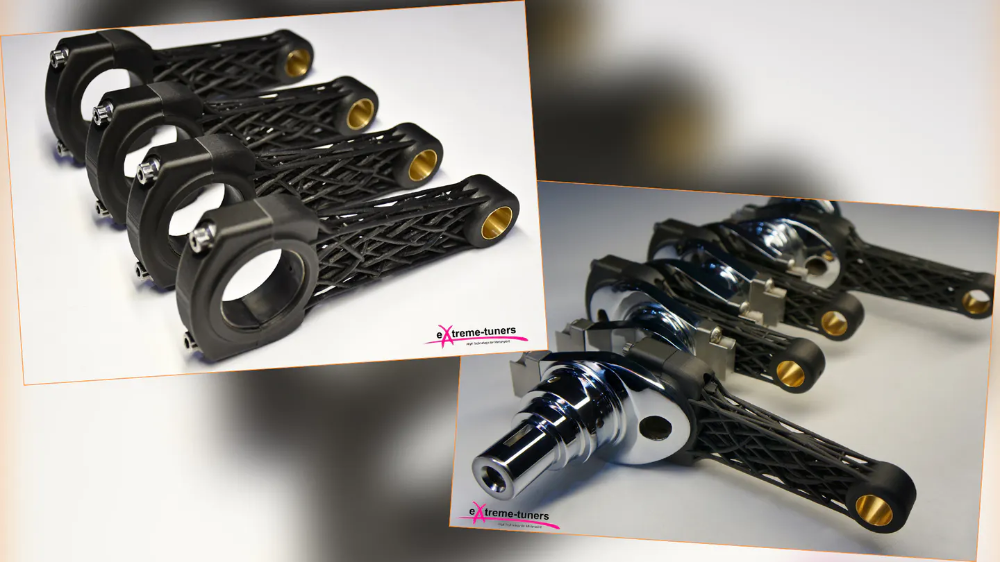 The fibers handle some of the applied stresses on the part, boosting the properties of typically lower-grade materials. The addition of carbon fiber also improves the thermal stability of mechanical properties, which widens the range of operating temperatures and improves predictability of material behavior in both high and low temperatures.
The fibers handle some of the applied stresses on the part, boosting the properties of typically lower-grade materials. The addition of carbon fiber also improves the thermal stability of mechanical properties, which widens the range of operating temperatures and improves predictability of material behavior in both high and low temperatures.
A close-up of chopped carbon fibers used in 3D printing, taken on an SEM.
These fibers are chopped up into fine pieces and mixed into the plastic before it gets extruded into a spool for use with material deposition-based 3D printers. In this case, the 3D printing process remains the same, because the fibers are just suspended in the thermoplastic - so it gets heated, extruded, and cooled into the part just like any other FFF style 3D printed. Chopped composite 3D printing materials take normal plastic that may be lacking in certain properties and boost it. In the case of carbon fiber, the fibers boost the strength, stiffness, and dimensional stability of the part to make it higher-performing than its base plastic.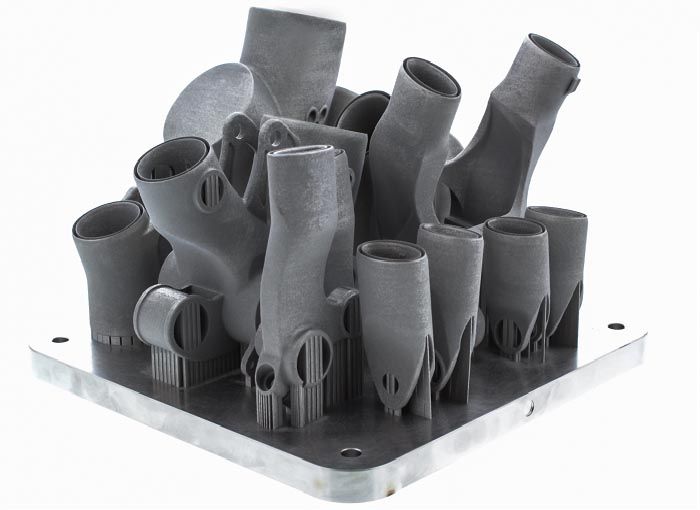
Chopped carbon fiber 3D printing materials can be used like normal 3D printing plastics, boosting some material properties.
The quantity of fibers and the length of chopped segments impacts the strength and quality of the part. Different vendors blend different amounts of fiber into their plastic, yielding materials with different strengths. Below a certain threshold, and the fibers boost surface finish, print quality. Above that threshold, mixing in a large quantity of longer fibers, and you get a stronger material, but you sacrifice surface finish and part accuracy because there is a smaller percentage of plastic in the material overall. The thermoplastic is essential to the mixture because it makes the printing process work well, so your parts can only get so strong.
Continuous Fiber 3D Printing
Continuous fiber 3D printing adds continuous strands of fiber reinforcement to the part (think back to fiber strands), to achieve metal-strength properties at a fraction of the weight.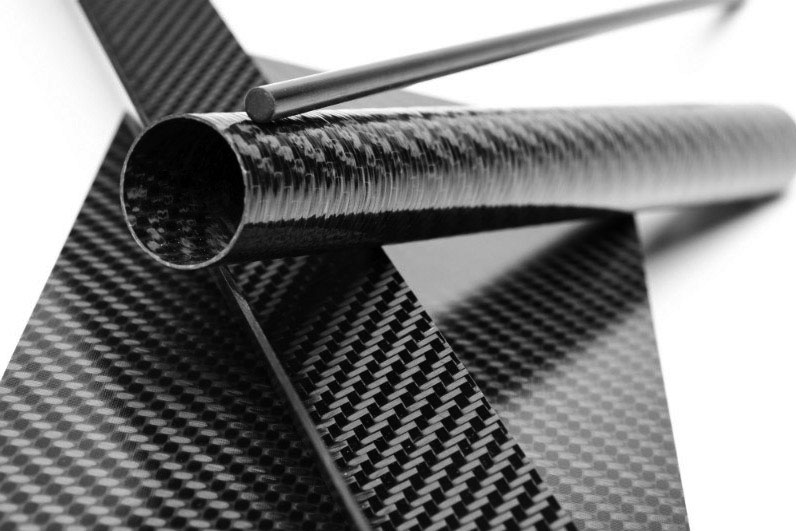 Using two print nozzles, the printer builds the matrix material out of a thermoplastic, and irons down continuous strands of continuous fibers into the part. This process is called Continuous Fiber Fabrication (CFF).
Using two print nozzles, the printer builds the matrix material out of a thermoplastic, and irons down continuous strands of continuous fibers into the part. This process is called Continuous Fiber Fabrication (CFF).
Continuous Kevlar strands are ironed into this part to increase its impact resistance with a composite fiber printing nozzle. A thermoplastic matrix material forms the skin and core of the part.
The power of CFF comes from the continuity of the strands. Unlike chopped fibers, continuous strands can absorb and distribute loads across their entire length. When placed within a thermoplastic matrix, the part can handle higher loads and absorb larger impacts. This allows these parts to achieve the strength of metal at a fraction of the weight.
Continuous fibers form the backbone of a 3D printed part, because the loads distribute along their length, rather than into the plastic.
The CFF 3D printing process consists of two steps per layer - first, a thermoplastic is extruded to form the infill and shells of the part - this serves as the “matrix” material of the composite.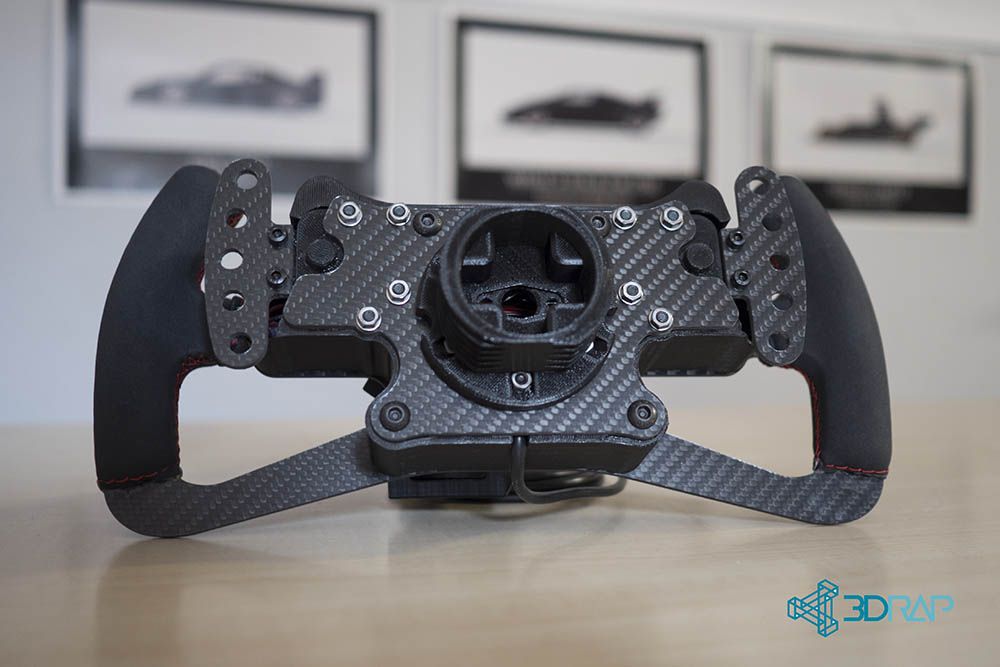 Next, the continuous fiber is ironed into that matrix, fusing with the thermoplastic by use of a compatible resin coating. This process repeats layer by layer, forming the fibers into the backbone of the 3D printed part, while the thermoplastic acts as a skin. This process is also similar to how rebar can be laid down inside concrete to reinforce it.
Next, the continuous fiber is ironed into that matrix, fusing with the thermoplastic by use of a compatible resin coating. This process repeats layer by layer, forming the fibers into the backbone of the 3D printed part, while the thermoplastic acts as a skin. This process is also similar to how rebar can be laid down inside concrete to reinforce it.
The fibers form the "backbone" of the part and can be laid down in specific patterns to optimize a part’s strength for its weight and material consumption. You can place fiber in specific areas based on how the part will experience load, putting the strength exactly where you need it. This is very different from standard deposition-based 3D printers, including with chopped fibers, because these methods have an even distribution of properties throughout the entire part. Different fiber reinforcement options can be used for different loading conditions and behaviors. You can learn more about the different reinforcement strategies in Fiber Reinforcement Strategies.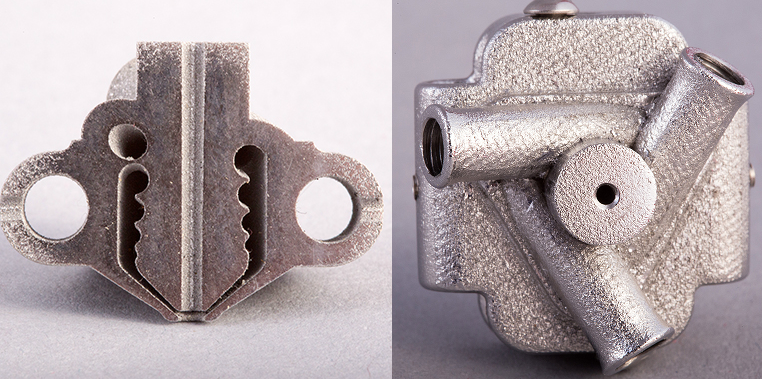
A variety of different fibers can be used for reinforcement as well, depending upon what material properties your part needs to have. Markforged 3D printers offer a few different fiber materials so that you can choose the strength behavior of the reinforcement:
Carbon Fiber is a stiff and strong fiber that behaves like 6061 Aluminum, so it can be used for lightweight components that support heavy loads.
This 3D printed carbon fiber can match the strength of aluminum when continuous. Both are supporting a 27.5 lb load.
Fiberglass is a sturdy, cost-effective reinforcing material with some compliance to it. It boosts part strength above that of plastics and is a good starting point for printing with reinforcement.
Fiberglass is a robust 3D printing fiber option, exceeding the strength of chopped fiber, ABS, and PLA when supporting a 7.5 lb weight.
Kevlar has high toughness and shock resistance, making it ideal for shock-loading and high-impact conditions. It bends instead of breaking.
It bends instead of breaking.
PLA, ABS, and Kevlar reinforced 3D printed parts getting shock-loaded with some big hammer hits!
High Strength High Temperature (HSHT) Fiberglass maintains its strength and stiffness at high temperatures because of its high heat-deflection temperature. Its heat resistance allows it to hold up in more extreme environments.
This test was performed after heating each beam to 300 degrees Fahrenheit in an oven. HSHT does not lose strength at high temperatures, so it still supports the 5 lb load.
So between selecting different fiber types for certain material needs, and controlling where the fiber can be placed layer by layer, you can control the behavior and performance of your parts. This is one of the primary advantages continuous 3D printed composites have over chopped fiber materials. Not only do you get stronger parts, but you also can produce parts optimized for their application.
All You Need to Know About Carbon Fiber for 3D Printing
Published on May 5, 2020 by Carlota V.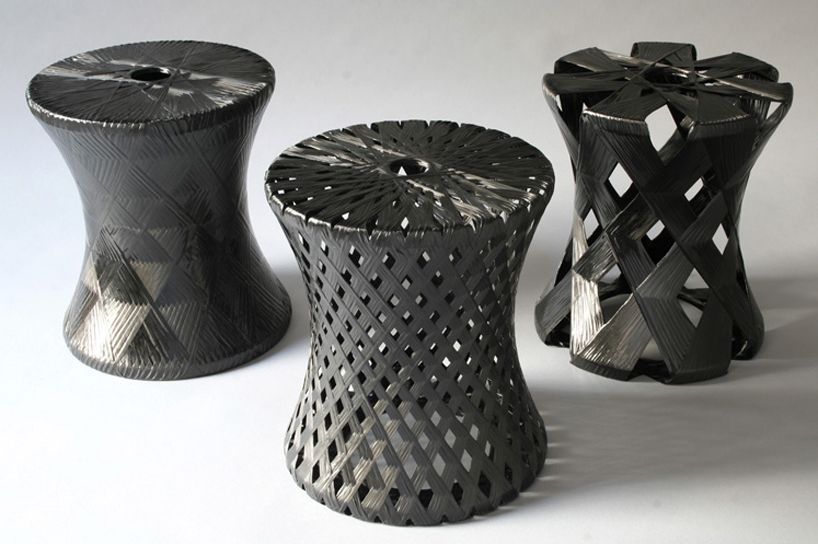
Produced for the first time by Joseph Swan in 1860, carbon fiber is made of a long chain of carbon atoms bonded together. The chain is usually between 5 to 10 micrometers in diameter and varies in length according to the application. Over the years, carbon fiber has become popular across many sectors because it offers interesting properties, including high stiffness, high tensile strength, low weight, high chemical resistance, high temperature tolerance and low thermal expansion. Pure carbon fiber is actually five-times stronger than steel and twice as stiff, yet lighter. As you can imagine, these characteristics make carbon fibers suitable for applications that rely on a material’s properties to optimize performance, which is particularly the case in sectors such as aerospace, automotive, military or civil engineering for example.
As some of you may already know, carbon fibers are rarely used on their own. They are usually combined with other materials to form what we call a composite material – referred to as carbon fiber reinforced materials in this particular case. These composites are made of a matrix material, usually a polymer – even though it is possible to use non-polymer materials such as ceramics – to which carbon fibers are added. The main benefit is you end up with a stronger, yet lighter plastic with an increased level of stiffness.
These composites are made of a matrix material, usually a polymer – even though it is possible to use non-polymer materials such as ceramics – to which carbon fibers are added. The main benefit is you end up with a stronger, yet lighter plastic with an increased level of stiffness.
The body of this bike frame has been made with carbon fiber | Credits: Arevo
Traditionally, carbon fiber composites have been used for structural design, where added weight translates into increased lifecycle costs or unsatisfactory performance. Carbon fiber composites can be used to create many products such as bike frames, aircraft wings, propeller blades, car components, etc. As you can imagine, given the many benefits of carbon fiber, it’s no longer just traditional manufacturing systems that are utilizing it. In recent years, a growing number of 3D printing companies have been offering carbon fiber reinforced materials or technologies developed to work with this composite to enable higher performance applications. So how is carbon fiber used in additive manufacturing?
So how is carbon fiber used in additive manufacturing?
3D Printing Applications
In its 3D Printing Composites 2020 – 2030 report, IDTechEx reveals that the global market for composite 3D printing will reach a value of $1.7 billion by the year 2030. This figure includes other composites such as materials that have been reinforced with glass or plastic fibers. Nevertheless, the trend clearly showcases that the 3D printing industry is increasingly using all composites, including carbon, in its manufacturing activities. In 3D printing, there are essentially two ways of using carbon fiber, the first is carbon fiber reinforced filaments and the second is continuous carbon fiber reinforcement.
Carbon Fiber Filament
Carbon fiber filament uses short carbon fibers, consisting of segments of less than one millimeter in length, which are mixed with a thermoplastic known as the base material. There are a number of popular filaments that can be bought with carbon fiber fill including PLA, PETG, Nylon, ABS, and Polycarbonate. These fibers being extremely strong, they cause the filament to increase in strength and stiffness, and also reduce its overall weight. The 3D printing requirements for carbon fiber filaments should be similar to those of the base material that the carbon fibers were added to. The main difference is that the fibers can clog the nozzles of the 3D printer, therefore experts recommend using a hardened steel nozzle. Additionally, above a certain threshold of fibers, the 3D printed part will lose in surface finish.
These fibers being extremely strong, they cause the filament to increase in strength and stiffness, and also reduce its overall weight. The 3D printing requirements for carbon fiber filaments should be similar to those of the base material that the carbon fibers were added to. The main difference is that the fibers can clog the nozzles of the 3D printer, therefore experts recommend using a hardened steel nozzle. Additionally, above a certain threshold of fibers, the 3D printed part will lose in surface finish.
Carbon fiber segments are incorporated into the filament to reinforce it | Credits: Markforged
Some companies have developed carbon fiber filaments for more technical applications. These filaments use as the base material high performance polymers (HPPs) such as PEEK or PEKK. Therefore, they not only offer the benefits of HPPs such as durability and strong mechanical and chemical performance, but also an improved strength-to-weight ratio. The printing parameters need to be adjusted since HPPs rely on extruders that can reach around 400°C, and systems that have heated chambers and build plates.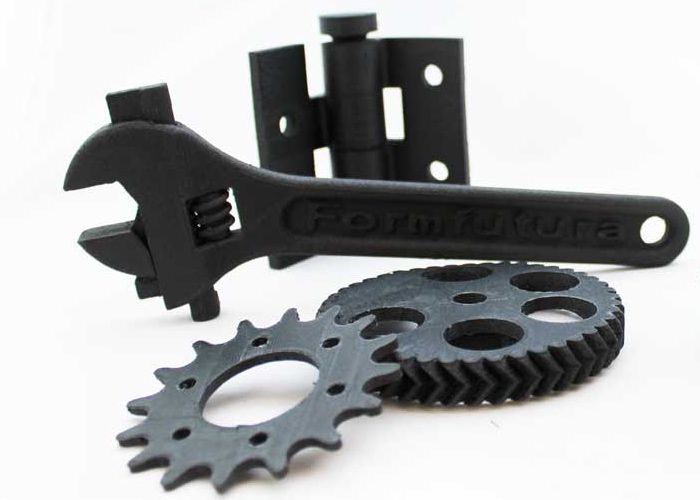 Some of the manufacturers of carbon fiber filaments include Roboze, 3DXTech, ColorFabb, Markforged, Kimya, Intamsys, Zortrax, etc.
Some of the manufacturers of carbon fiber filaments include Roboze, 3DXTech, ColorFabb, Markforged, Kimya, Intamsys, Zortrax, etc.
Continuous Carbon Fiber Reinforcement
Carbon fiber filament is definitely stronger than a filament that has not been reinforced. However, in order to obtain an even stronger part, another technique can be used, called continuous carbon fiber reinforcement. Since the carbon fiber is not chopped up into smaller pieces, it retains much more of its strength. In fact, continuous carbon fiber 3D printing is strong enough to replace aluminium at half the weight. 3D printer manufacturers claim that it can replace metal 3D printing for some applications – the main advantage being it is cheaper than metal. Finally, by placing the carbon fiber according to DfAM techniques, it is possible to add even more strength to a part whilst reducing material use.
Using DfAM techniques, it is possible to reinforce a part using carbon fiber | Credits: Anisoprint
There are a few actors on the market that offer technologies that can print carbon fibers in a continuous way. Actors can be divided into two main types, depending on when the carbon fiber is added (it can be added before the 3D printing process or during). When added before, continuous fiber 3D printing is known as prepreg-based, whilst when it is added during extrusion it is known as co-extrusion. In the prepeg technique, you also end up with a composite filament (or tape) but the carbon fibers have not been chopped up, instead they have been impregnated with the polymer thanks to a pultrusion process.
Actors can be divided into two main types, depending on when the carbon fiber is added (it can be added before the 3D printing process or during). When added before, continuous fiber 3D printing is known as prepreg-based, whilst when it is added during extrusion it is known as co-extrusion. In the prepeg technique, you also end up with a composite filament (or tape) but the carbon fibers have not been chopped up, instead they have been impregnated with the polymer thanks to a pultrusion process.
Actors that offer continuous fiber 3D printing on the market include Markforged, Anisoprint, CEAD, etc. More recently, Desktop Metal also joined the race by launching a new system called Fiber. Fiber uses Micro Automated Fiber Placement (μAFP). Additionally, 9T Labs has developed Additive Fusion Technology (AFT) to mass produce carbon composites at lower cost.
Carbon Fiber 3D Printing: Other Technologies
Moving away from the more well-known extrusion process, an interesting technology is AREVO’s proprietary process based on Directed Energy Deposition technology, in which a laser is used to heat the filament and carbon fiber at the same time as a roller compresses the two together. Impossible Objects and EnvisionTEC have also added systems for carbon fiber 3D printing to their range of machines, the technology however differs a bit. They weave in sheets of carbon fiber into a print by using a lamination process. Last but not least, Continuous Composites uses a hybrid technology where the strand of fiber is soaked with resin and then hardened using UV light, similarly to SLA 3D printing.
Impossible Objects and EnvisionTEC have also added systems for carbon fiber 3D printing to their range of machines, the technology however differs a bit. They weave in sheets of carbon fiber into a print by using a lamination process. Last but not least, Continuous Composites uses a hybrid technology where the strand of fiber is soaked with resin and then hardened using UV light, similarly to SLA 3D printing.
This part showcases how continuous carbon fiber 3D printing can add strength to a plastic part | Credits: Markforged
What do you think of carbon fiber 3D printing? Let us know in a comment below or on our Facebook and Twitter pages! Sign up for our free weekly Newsletter, all the latest news in 3D printing straight to your inbox!
Everything you need to know about 3D printing carbon fiber
First produced by Joseph Swan in 1860, carbon fiber is made up of a long chain of carbon atoms bonded together. The chain is typically 5 to 10 micrometers in diameter and varies in length depending on the application.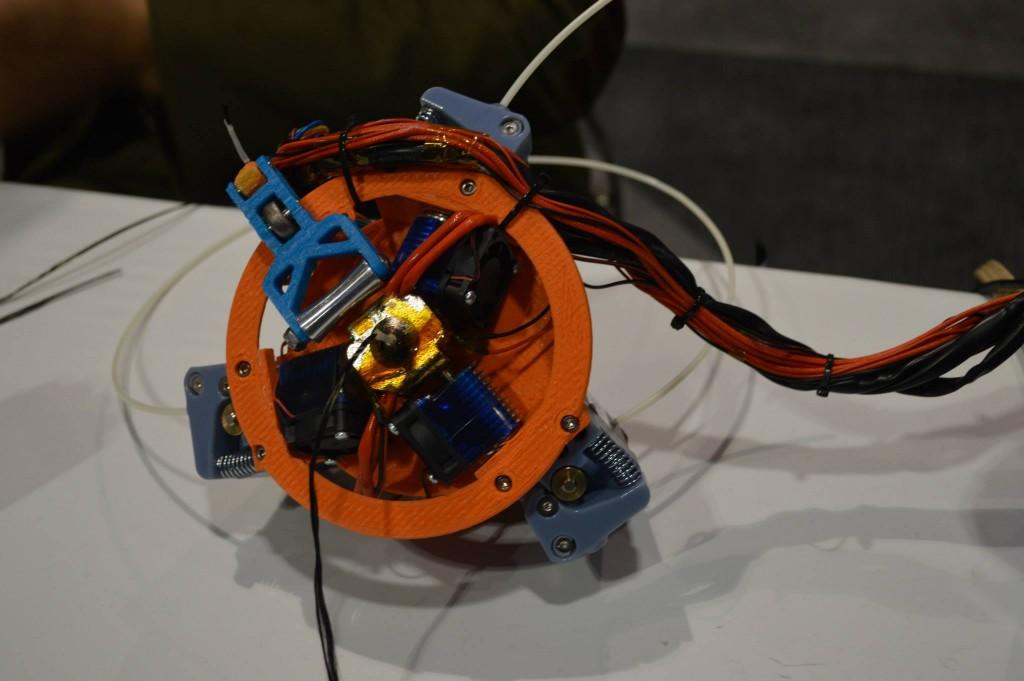 Over the years, carbon fiber has become popular in many sectors because it offers interesting properties, including high stiffness, high tensile strength, light weight, high chemical resistance, high temperature resistance, and low thermal expansion. Pure carbon fiber is actually five times stronger than steel and twice as stiff but lighter. As you can imagine, these characteristics make carbon fibers suitable for applications in sectors such as aerospace, automotive, military or civil engineering.
Over the years, carbon fiber has become popular in many sectors because it offers interesting properties, including high stiffness, high tensile strength, light weight, high chemical resistance, high temperature resistance, and low thermal expansion. Pure carbon fiber is actually five times stronger than steel and twice as stiff but lighter. As you can imagine, these characteristics make carbon fibers suitable for applications in sectors such as aerospace, automotive, military or civil engineering.
As some of you may already know, carbon fibers are rarely used on their own. They are usually combined with other materials to form what we call a composite material - in this particular case, these are materials reinforced with carbon fiber. These composites are made from a matrix material, usually a polymer, although it is possible to use non-polymer materials such as ceramics to which carbon fibers are added. The main advantage is that you end up with a stronger but lighter plastic with a higher level of stiffness.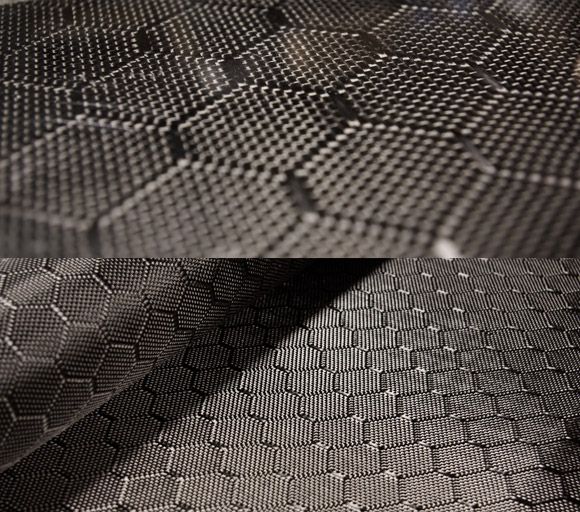
The body of this bike frame is made of carbon fiber | Source: Arevo
Traditionally, carbon fiber composites have been used for structural design, where added weight results in increased life cycle costs or unsatisfactory performance. Carbon fiber composites can be used to create many products such as bicycle frames, aircraft fenders, propeller blades, automotive components, etc. As you can imagine, given the many benefits of carbon fiber, it is already being used by more than just traditional manufacturing systems. In recent years, more and more 3D printing companies are offering carbon fiber reinforced materials or technologies. They are designed to work with this composite to provide better performance. So how is carbon fiber being used in additive manufacturing?
3D Printing Applications
In its 3D Printing Composites 2020 - 2030 report, IDTechEx reports that the global market for 3D printing composites will reach $1.7 billion by 2030. This figure also includes other composite materials, such as materials reinforced with fiberglass or plastic. However, this trend clearly demonstrates that the 3D printing industry is increasingly using all composites, including carbon, in their manufacturing activities. There are essentially two ways to use carbon fiber in 3D printing, the first is carbon fiber reinforced filaments and the second is continuous carbon fiber reinforcement.
This figure also includes other composite materials, such as materials reinforced with fiberglass or plastic. However, this trend clearly demonstrates that the 3D printing industry is increasingly using all composites, including carbon, in their manufacturing activities. There are essentially two ways to use carbon fiber in 3D printing, the first is carbon fiber reinforced filaments and the second is continuous carbon fiber reinforcement.
Carbon fiber filament
Carbon fiber filament uses short carbon fibers composed of segments less than one millimeter long, which are mixed with a thermoplastic known as a base material. There are a number of popular filaments available with carbon fiber fill, including PLA, PETG, nylon, ABS, and polycarbonate. These fibers, being extremely strong, cause an increase in the strength and stiffness of the thread, and also reduce its overall weight. The requirements for 3D printing carbon fiber filaments should be the same as for the base material they were added to. The main difference is that fibers can clog 3D printer nozzles, so experts recommend using a hardened steel nozzle. In addition, when a certain threshold of fibers is exceeded, the part printed on a 3D printer loses its surface quality.
The main difference is that fibers can clog 3D printer nozzles, so experts recommend using a hardened steel nozzle. In addition, when a certain threshold of fibers is exceeded, the part printed on a 3D printer loses its surface quality.
Carbon fiber segments embedded in thread for reinforcement | Source: Markforged
Some companies have developed carbon fiber fibers for more technical applications. These yarns use high performance polymers (HPPs) such as PEEK or PEKK as the base material. Consequently, they not only offer the benefits of HPPs such as durability and high mechanical and chemical performance, but also an improved strength to weight ratio. Print settings need to be adjusted as HPPs require extruders that can heat up to 400°C and systems that have heated chambers and build plates. Some of the carbon fiber filament manufacturers are: Roboze, 3DXTech, ColorFabb, Markforged, Kimya, Intamsys, Zortrax, etc.
Continuous carbon fiber reinforcement
Carbon fiber thread is definitely stronger than thread that has not been reinforced.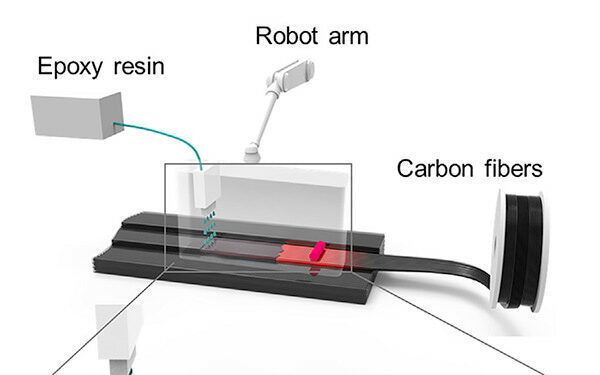 However, to get an even stronger part, another method called continuous carbon fiber reinforcement can be used. Since carbon fiber is not cut into smaller pieces, it retains much more strength. In fact, continuous printing on carbon fiber is strong enough to be half the weight of aluminium. 3D printer manufacturers claim that they can replace metal 3D printing for some applications. And the main advantage is that it is cheaper than metal. Finally, by placing carbon fiber according to DfAM techniques, it is possible to increase the strength of the part while reducing material consumption.
However, to get an even stronger part, another method called continuous carbon fiber reinforcement can be used. Since carbon fiber is not cut into smaller pieces, it retains much more strength. In fact, continuous printing on carbon fiber is strong enough to be half the weight of aluminium. 3D printer manufacturers claim that they can replace metal 3D printing for some applications. And the main advantage is that it is cheaper than metal. Finally, by placing carbon fiber according to DfAM techniques, it is possible to increase the strength of the part while reducing material consumption.
Using DfAM methods, it is possible to strengthen a part using carbon fiber | Source: Anisoprint
There are several players on the market that offer technologies that can continuously print carbon fibers. They can be divided into two main types, depending on when the carbon fiber is added (it can be added before the 3D printing process or during). When added earlier, continuous fiber 3D printing is known as backing prepreg, while when added during extrusion, it is called co-extrusion.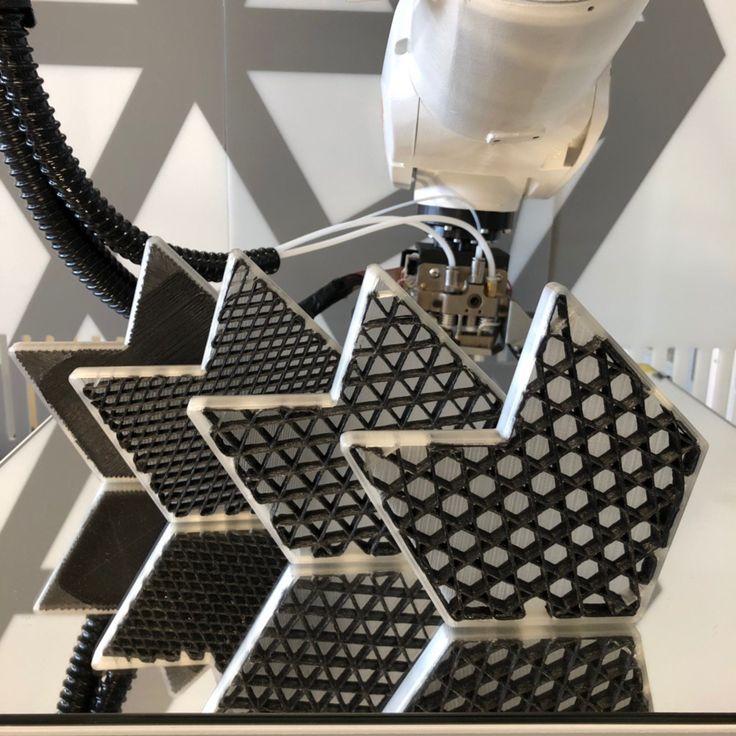 In the prepeg technique, you also get a composite thread (or tape), but the carbon fibers have not been cut, instead they have been impregnated with a polymer through a pultrusion process.
In the prepeg technique, you also get a composite thread (or tape), but the carbon fibers have not been cut, instead they have been impregnated with a polymer through a pultrusion process.
Members offering continuous fiber 3D printing include Markforged, Anisoprint, CEAD, etc. More recently, Desktop Metal has also joined the race with a new system called Fiber. Fiber uses Micro Automated Fiber Placement (µAFP). In addition, 9T Labs has developed additive synthesis technology (AFT) to mass-produce carbon composites at a lower cost.
Carbon 3D printing: other technologies
A departure from the better known extrusion process, an interesting technology is the patented AREVO process, based on directed energy deposition technology, in which a laser is used to heat filament and carbon fiber simultaneously as a roller presses them together. Impossible Objects and EnvisionTEC have also added carbon fiber 3D printing systems to their machines, but the technology is slightly different.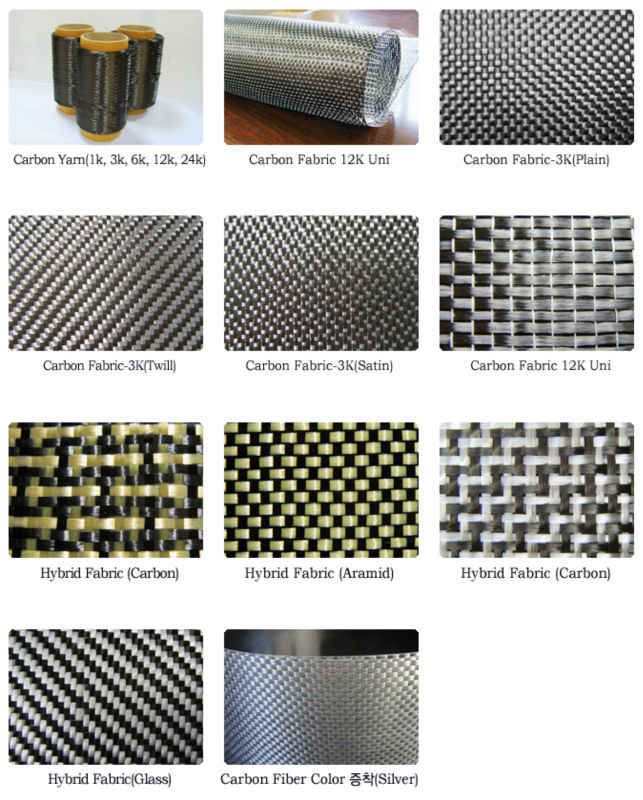 They weave sheets of carbon fiber using a lamination process. Last but not least, Continuous Composites uses a hybrid technology where a strand of fiber is impregnated with resin and then cured with UV light, similar to SLA 3D printing.
They weave sheets of carbon fiber using a lamination process. Last but not least, Continuous Composites uses a hybrid technology where a strand of fiber is impregnated with resin and then cured with UV light, similar to SLA 3D printing.
This part demonstrates how continuous carbon fiber 3D printing can increase the strength of a plastic part | Source: Markforged
Source
carbon fiber, composite materials, 3D printing, carbon fiber composites. additive manufacturing, PLA, ABS, polycarbonate, nylon, 3D printing filament, 3D printer, Anisoprint, additive synthesis, 9T Labs, carbon 3d printing, 3D SLA
Carbon fiber 3D printing
Lawrence Livermore claim they are the world's first 3D printed carbon fiber aerospace composites and may be paving the way for sophisticated new printouts.
Carbon fiber is a material that is stronger than steel and at the same time very light. Because of this, it is ideal for the manufacture of parts for the aerospace and automotive industries.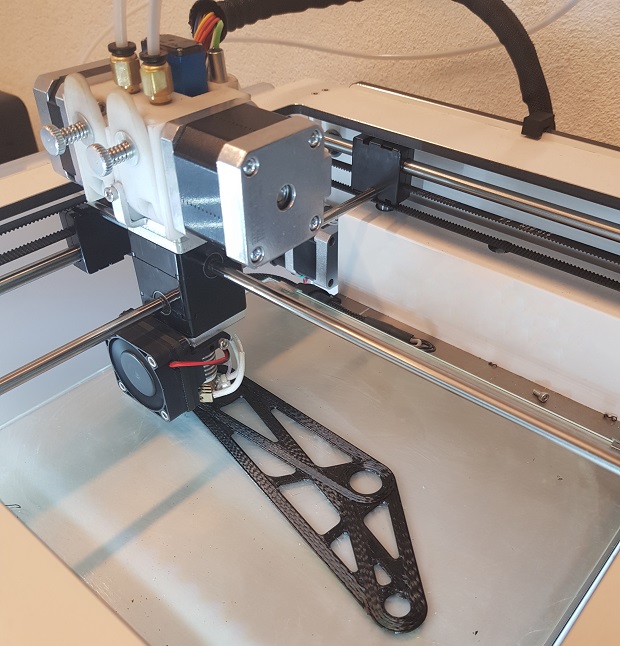 However, when creating complex shapes from the material using traditional methods, it is extremely difficult to control.
However, when creating complex shapes from the material using traditional methods, it is extremely difficult to control.
Researchers at Lawrence Livermore National Laboratory (LLNL) may have found a way to change that. The Explorers are the world's first 3D printed carbon fiber aerospace composites. And they believe that because of this work, they will be able to control and optimize the use of high specification material.
This is not the first time carbon fiber has been 3D printed. There are many PLA derivatives that can do the same on a regular home printer. However, it is important to note that the difference is that LLNLs have printed aerospace composites.
Previous problems with carbon fiber composites have included the complex techniques required to create parts and overcompensate material due to "performance issues". However, the researchers at LLNL were able to achieve the same material properties as two-thirds through a new 3D printing method.
To achieve this goal, LLNL created its own Direct Ink Printer (DIW) using its own carbon fiber composite "ink". The researchers also patented a method to cure extruded material in seconds, not hours.
They used the computational model shown in the video above to develop models for the flow of carbon fiber filaments in their inks. Julia Kanarska, analyst, explains:
“We have developed a numerical code to simulate a non-Newtonian liquid polymer resin with a carbon fiber dispersion. With this code, we can simulate the evolution of fiber orientation in 3D under different printing conditions. We've managed to find the optimal fiber length and optimal performance, but it's still a work in progress. Current efforts are to achieve even better fiber alignment by applying magnetic forces to stabilize them.”
Since the material is conductive, it allows the control of thermal channeling. The use could be in the manufacture of satellite components that - printed in their design - are insulated on one side.


